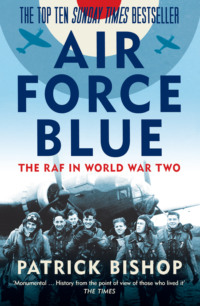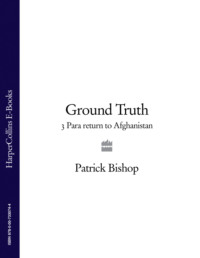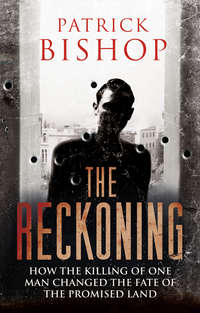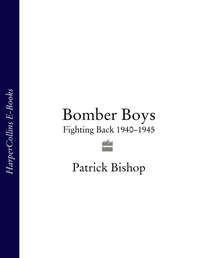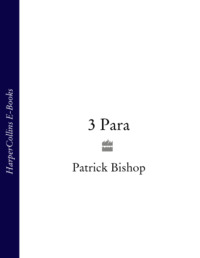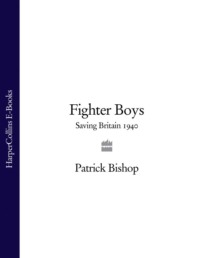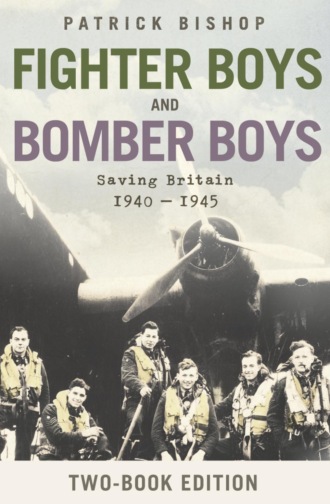
Полная версия
Fighter Boys and Bomber Boys: Saving Britain 1940-1945
Among the new creations was 609 (West Riding) Squadron, formed in February 1936. Its first commanding officer was Harald Peake, an old-Etonian businessman from a local coal-owning family who had been chairman of large concerns like Lloyds Bank and London Assurance, and a keen amateur flier who took his private aeroplane on summer tours of the Continent. Peake had long been eager to raise auxiliary squadrons in the county when further units were required, and as soon as he was given the go-ahead began recruiting from among the sons of the big industrial and landowning families of Yorkshire. Stephen Beaumont, a junior partner in his family’s law firm, which had Peake as a client, was one of the first to join. He was a thoughtful and dutiful man with a strong social conscience. With Hitler’s arrival in power he felt a growing conviction that war was inevitable and he decided to fight in it as a pilot. He began flying at the West Riding Aero Club at Yeadon near Leeds, and when he heard that a new squadron was being formed, offered his services to Peake.
Beaumont found Peake ‘very capable. He was about thirty-seven and had held commissions in the Coldstream Guards at the end of the First World War and later in the Yorkshire Dragoons Yeomanry. Perhaps because of our professional relationship I was somewhat in his confidence. He wanted officers who were no more than twenty-five, of public-school and university backgrounds and unmarried.’ Beaumont was twenty-six and engaged to be married but was accepted none the less. Peake could afford to be choosy. By 8 June he had vetted 80 applications for commissions and 200 for posts as airmen. Despite this response, actual recruitment was slow, only speeding up as war approached. The squadron had a sprinkling of officers from aristocratic and county backgrounds. They included Peter Drummond-Hay, a textile executive who insisted on the use of both barrels of his Scottish name. He was discontented with his work in the cloth trade. Beaumont wrote that ‘he liked to give the impression that he would be better employed as the owner of a large country estate, where he would know all the county, and indeed in North Yorkshire he did know a great many of that section of society. Somewhat caustic about and dismissive of most Yorkshiremen, he was very courteous to women.’48 Dudley Persse-Joynt was an oil executive from an old Anglo-Irish family, and the first auxiliary adjutant was the Earl of Lincoln, who later became the Duke of Newcastle. But most of the members came from families who had prospered in the reign of Victoria and whose wealth was founded on coal and cloth.
Philip Barran’s family were textile and coalmining magnates from Leeds. Joe Dawson’s father, Sir Benjamin Dawson, was a power in the cloth trade and a baronet. A later recruit, John Dundas, was related to two Yorkshire grandees, the Marquess of Zetland and Viscount Halifax, and was a cousin of Harald Peake. He was academically brilliant, winning scholarships to Stowe and Oxford and taking a first in modern history before going on to study at Heidelberg and the Sorbonne. He had joined the staff of the Yorkshire Post, specializing in foreign affairs, and was sent to report from Czechoslovakia at the time of Munich and accompanied Chamberlain and his own kinsman Halifax to Rome. Barran, always known as Pip, was stocky, boisterous, a rugby player, a trainee mining engineer and the manager of a brickworks owned by his mother’s family. His commanding officer eulogized him as ‘the very best type of AAF officer, a born leader who communicated his enthusiasm to others’.49 It was he who came up with the nicknames that adorned the members of 609 as they prepared for war.
The last auxiliary squadron to be formed was 616, which officially came into being on 1 November 1938 in Doncaster, South Yorkshire, as an offshoot of 609. Hugh Dundas had left Stowe in the summer of that year and was hoping to follow his brother John to Oxford. His father, however, insisted on him going into the law and he ended up being articled to a firm of Doncaster solicitors. Dundas applied to join 616 Squadron, but mysteriously failed the medical exam three times before finally being passed fit by an ex-Ireland rugby international RAF doctor after ‘the most perfunctory examination’, for which Nelsonian oversight he was eternally thankful.
Dundas finally joined in the last summer before the war. His CO was the Earl of Lincoln, who had moved on from 609, and other squadron members included Teddy St Aubyn, a Lincolnshire landowner who had moved into the AAF after being forced to resign his commission in the Grenadier Guards following his marriage to Nancy Meyrick, daughter of Kate ‘Ma’ Meyrick, who presided over the Forty-Three, a nightclub in between-the-wars London whose liveliness shaded into notoriety.
Dundas spent his time divided between Bawtry, the home of his aunt and her husband Bertie Peake – a lakeside house where the decor and routines had not changed since the 1890s – and the mess at the squadron station at Doncaster, where he also had a room and a batman. It was there that he acquired his nickname. ‘I was sitting by the fireplace in the mess one evening before dinner. On the wall at my side was the bell button. Teddy St Aubyn and others were there. Teddy felt the need for further refreshment and decided that I was conveniently placed to summon the mess steward. “Hey you,” he said pointing at me. “Hey you – Cocky – press the bell.” I promptly did his bidding. But why had he described me as “Cocky”? What had I done? Nervously I asked him.’ St Aubyn replied that he had forgotten his name, but that Dundas, an elongated figure with a shock of hair, reminded him of a ‘bloody great Rhode Island Red’. The name stuck to him for the rest of his life.
He spent the summer days learning to fly in an archaic dual-control Avro Tutor, probably one of the last RAF pilots ever to do so. Some difficult manoeuvres came quite easily, ‘But slow rolls I hated and had great difficulty in achieving. I felt quite helpless when the machine was upside-down and I was hanging on my straps, dust and grit from the bottom of the cockpit falling around me. Again and again, when inverted, I instinctively pulled the stick back, instead of pushing it forward and so fell out of the roll in a tearing dive.’50
The search for new pilots also meant an increase in the strength of the university air squadrons. In May 1938 there were three, Oxford, Cambridge and London, which had been set up three years previously. That month they each increased the number of available places from seventy-five to a hundred. It had been hoped that the squadrons would provide a practical link between the air force and aeronautical research, particularly at Cambridge. The Oxford University Air Squadron (OUAS) operations book records its primary object as being ‘to provide at the university a means by which interest in the air generally and in particular in the Royal Air Force can be stimulated’. Its second function was to ‘provide suitable personnel to be trained as officers for the Royal Air Force in the event of war’. In practice, for most of its life the squadron functioned primarily as a flying club, for which the government paid.
Christopher Foxley-Norris went up to Oxford from Winchester in 1936 and was encouraged to join the OUAS by his brother, who was already a member. The prospect of the £25 gratuity paid on being accepted was also attractive. He wanted to buy a car, which he believed to be a crucial accessory if he was ever to get a girlfriend. OUAS members cut a dash. They were chauffered to their station at RAF Abingdon in two old Rolls-Royces, nicknamed Castor and Pollux, hired from a local firm. Once qualified, one was entitled to wear the squadron blazer with crest and gold RAF buttons. Foxley-Norris regarded it as ‘a corps d’élite. It was very difficult to get into because there were some very outstanding people. It was a glamorous sort of club to be in, but not like the Bullingdon or something upmarket like that.’
The most immediately noticeable member was Richard Hillary, whose harsh wit, self-regard, good looks and ability as an oarsman made him stand out in a society not short of distinctive characters or large egos. Foxley-Norris met Hillary through friends who had been with him at Shrewsbury, his old school. ‘I came across him when we were out on pub crawls and that sort of thing and I got to know him quite well. He was extremely arrogant and conceited.’51 Hillary was also a poor learner, and his progress was not helped by the amount of time he spent on the river. ‘This member proved very difficult to get off solo,’ noted his instructor. ‘He would not relax on the controls, he just held on like a vice.’ Once flying alone, however, he ‘improved rapidly’. The chief flying instructor judged that he ‘lacked keenness…I do not consider that he has any real interest in flying’.52
Hillary was to have a powerful effect on British and international perceptions of the character and motivations of the pilots of 1940 through his book The Last Enemy, which appeared in 1941 after he had been shot down and badly burned, and became a best-seller in Britain and the United States. It is a book as much about friendship as flying, and those closest to him in the last years of his short life were all products of the University Air Squadrons. Among them was Noel Agazarian, the third son of an Armenian father and a French mother who had bought an old Sopwith Pup biplane and parked it in the garden of the family’s Georgian house in Carshalton, Surrey, for the boys to clamber over. Agazarian went from his public school, Dulwich, to Wadham College, Oxford, in 1935, leaving three years later with a boxing blue and a law degree. He joined the air squadron and was commissioned into the RAFVR in January 1939. He was a brilliant linguist, funny and disrespectful. He was also good looking and when it came to attracting women was a match for Hillary, who seems to have rather resented his easy and natural charm. ‘We called him Le Roi Soleil,’ said his adoring young sister, Yvonne. ‘He was always laughing and clowning. Noel was very much loved by everyone who met him.’53 Peter Pease and Colin Pinckney, both old Etonians, had also joined the Cambridge University Air Squadron and both had been commissioned in the RAFVR by the end of 1938. They met Hillary during training and their subsequent intense and poetic triangular relationship was to be celebrated in the book.
The great variety of backgrounds and schools, the wide divergences of rank, wealth and privilege, made Fighter Command perhaps the most socially diverse élite ever seen in the British military. In a country where minutely defined social gradations conditioned the reactions of human beings to each other, the mingling of the classes caused some discomfort. The situation was described in a condescending bon mot: ‘Auxiliaries are gentlemen trying to be officers. Regulars are officers trying to be gentlemen. VRs are neither trying to be both.’ It was a last, snobbish gasp from a disappearing world. Very soon the distinction would not matter. It was true that many of the men in Fighter Command came from backgrounds that were ‘ordinary’. But that did not mean that they themselves were so; and they were about to do extraordinary things.
Конец ознакомительного фрагмента.
Текст предоставлен ООО «ЛитРес».
Прочитайте эту книгу целиком, купив полную легальную версию на ЛитРес.
Безопасно оплатить книгу можно банковской картой Visa, MasterCard, Maestro, со счета мобильного телефона, с платежного терминала, в салоне МТС или Связной, через PayPal, WebMoney, Яндекс.Деньги, QIWI Кошелек, бонусными картами или другим удобным Вам способом.




